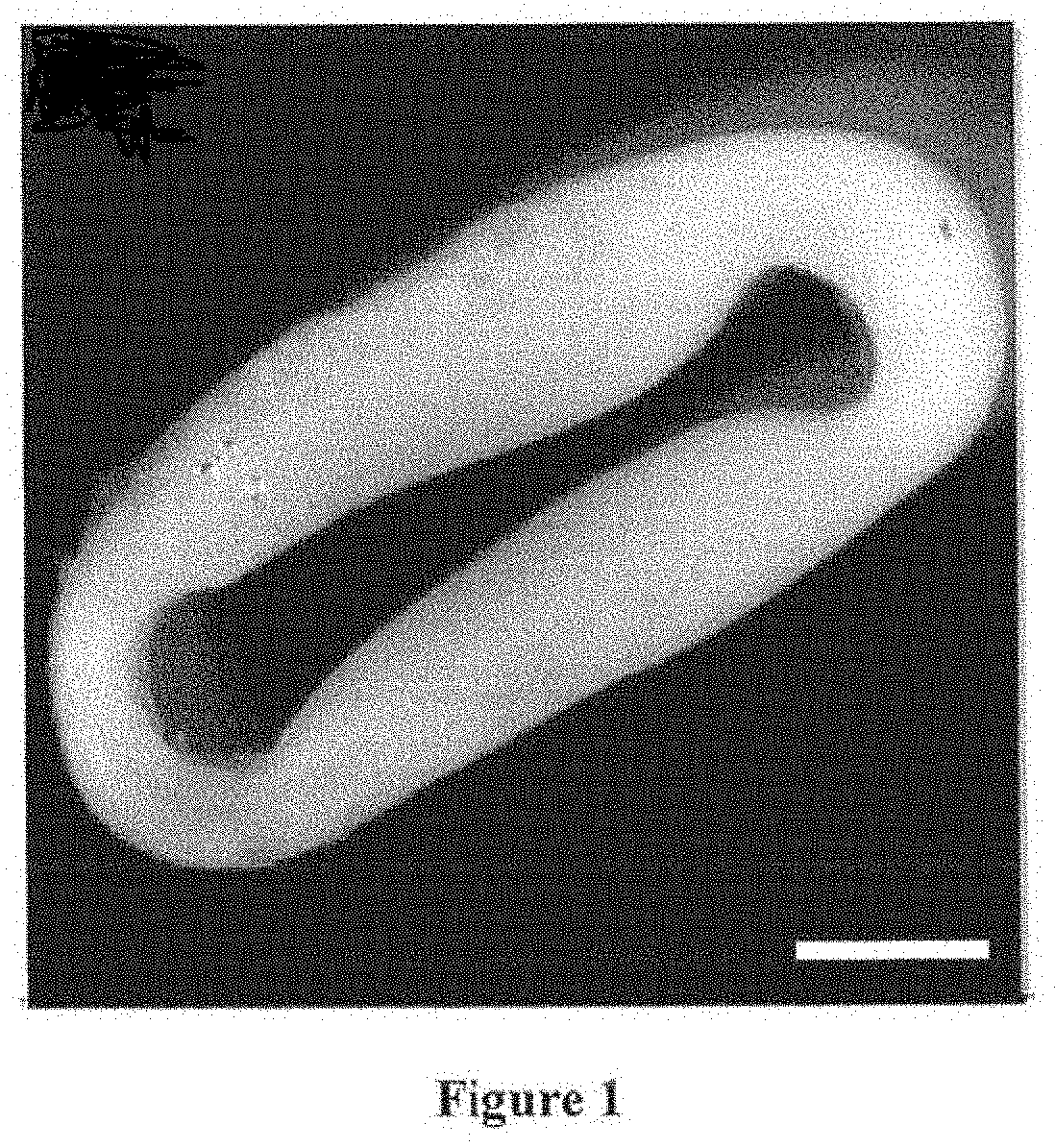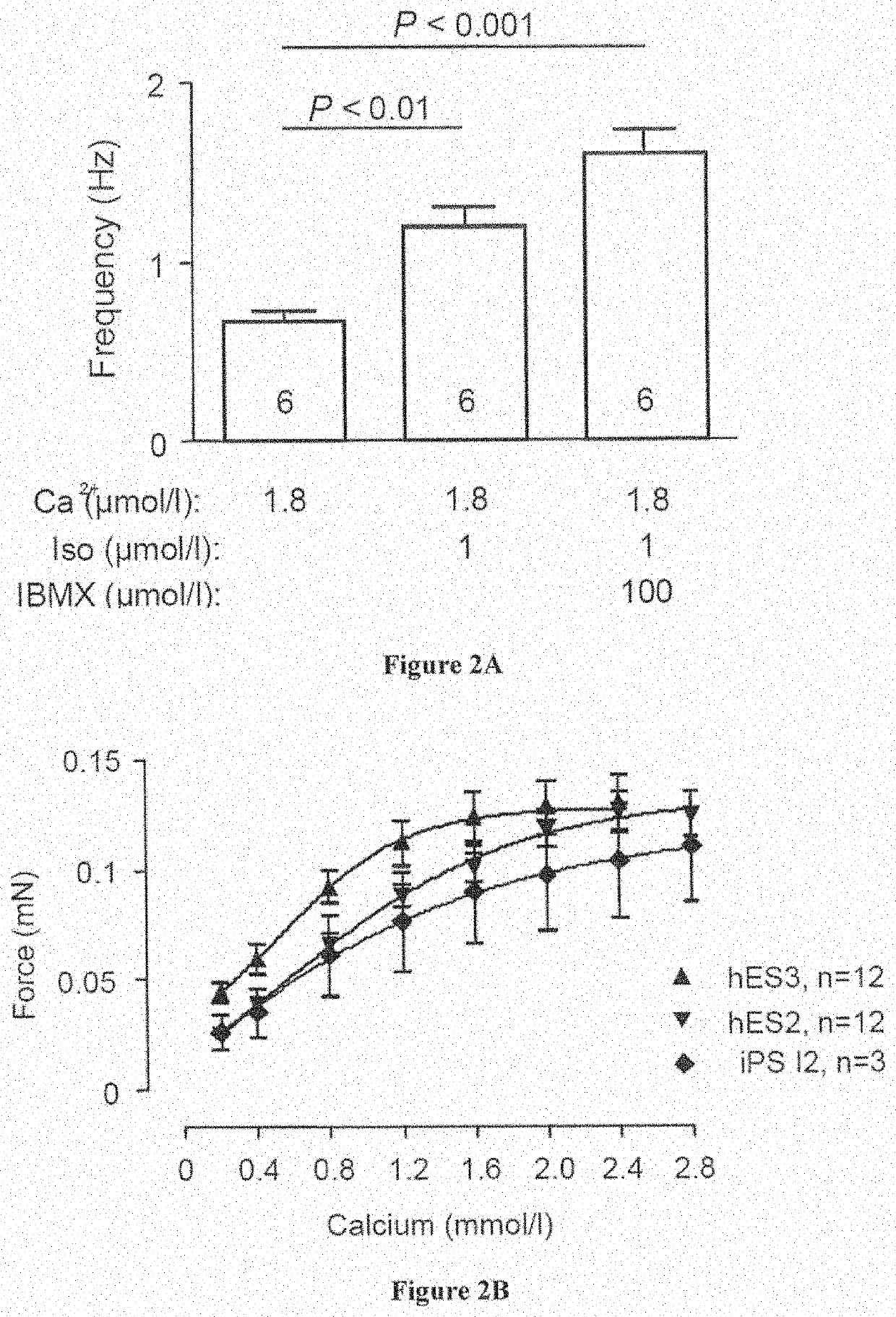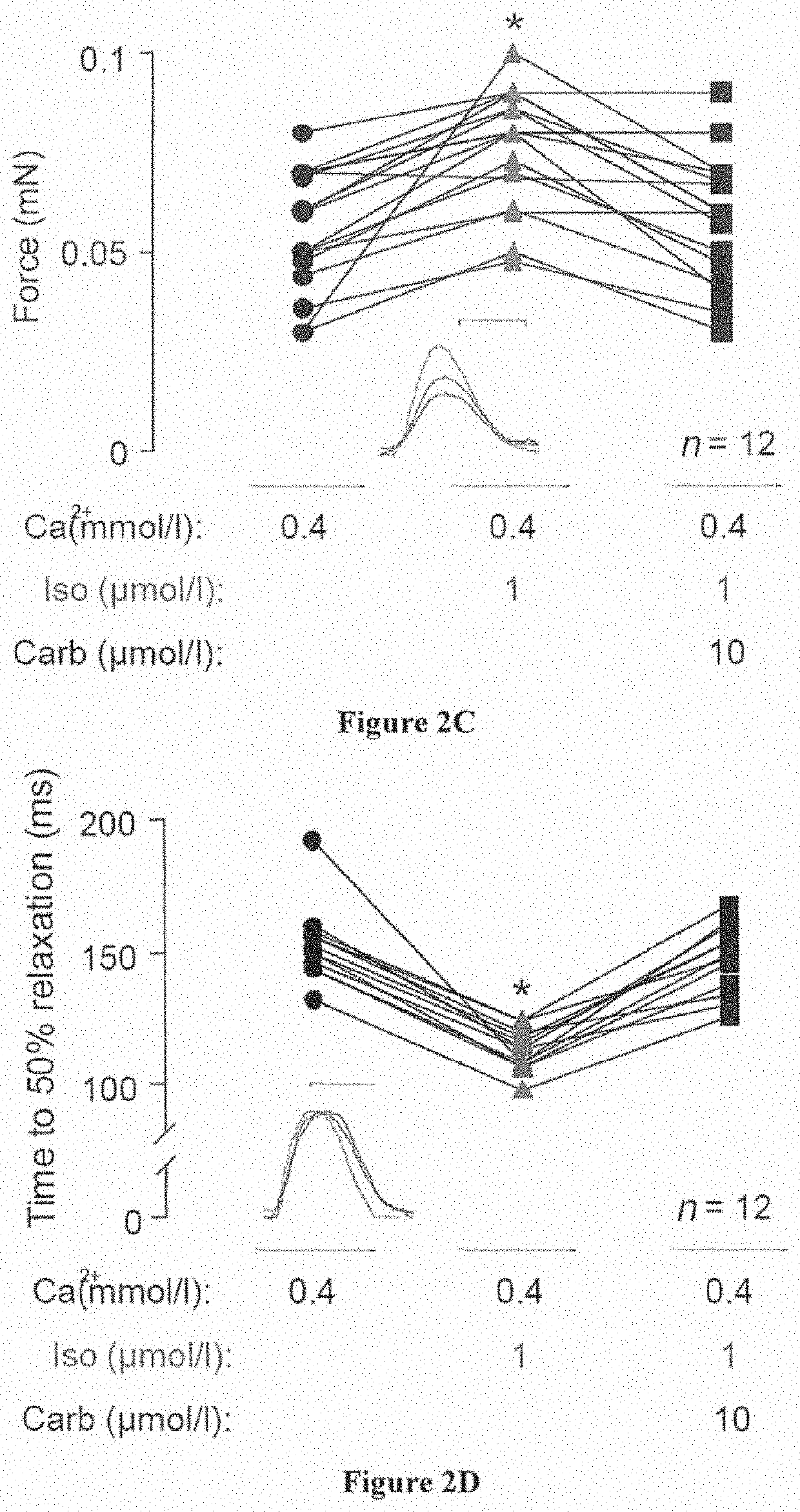Method for producing engineered heart muscle (EHM)
a heart muscle and engineered technology, applied in the direction of cardiovascular disorders, drug compositions, skeletal/connective tissue cells, etc., can solve the problems of only showing reliable force generation and the challenge of human force-generating myocardium
- Summary
- Abstract
- Description
- Claims
- Application Information
AI Technical Summary
Benefits of technology
Problems solved by technology
Method used
Image
Examples
examples
Materials
[0153]The materials used herein are commercially available. For example, DMEM, RPMI, αMEM (cat. No. 32561-029), streptomycin, penicillin, and B27 are obtainable from Invitrogen; bovine collagen of medical grade is available from Devros Medical; fatty acid supplement can be ordered from Sigma (cat. No. F7050); and the various growth factors are available from Peprotech (FGF2, AF-1ββ-18B; IGF-1, AF-100-11; TGFβ1, 100-21).
Methods
[0154]Human ESC and iPS-Lines and Culture
[0155]The inventors utilized H9.2 (Technion, Haifa, Israel), hES3 (Embryonic Stem Cell International, Singapore) and transgenic hES3-ENVY (Costa, M., et al. Nat Methods 2: 259-260 (2005)) as well as hES2 line (McEwen Centre for Regenrative Medicine, Toronto, Canada; Yang et al. Nature 453: 524-528 (2008)) in the present study (approval by the Robert-Koch-Institute to W.-H.Z.: permit #12; reference number: 1710-79-1-4-16). Differentiated EBs were shipped to Hamburg / Goettingen at room temperature and arrived withi...
PUM
 Login to View More
Login to View More Abstract
Description
Claims
Application Information
 Login to View More
Login to View More - R&D Engineer
- R&D Manager
- IP Professional
- Industry Leading Data Capabilities
- Powerful AI technology
- Patent DNA Extraction
Browse by: Latest US Patents, China's latest patents, Technical Efficacy Thesaurus, Application Domain, Technology Topic, Popular Technical Reports.
© 2024 PatSnap. All rights reserved.Legal|Privacy policy|Modern Slavery Act Transparency Statement|Sitemap|About US| Contact US: help@patsnap.com










